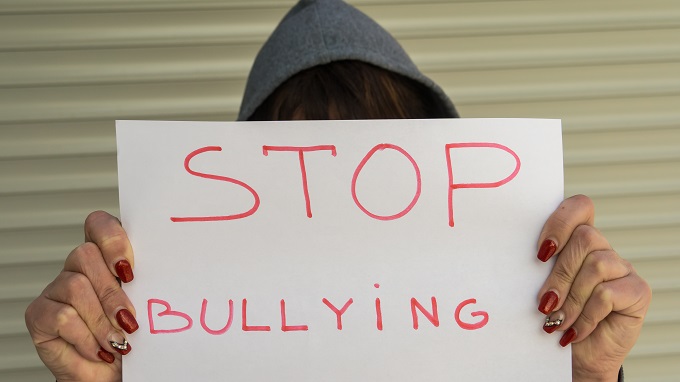
Amid calls for compulsory anti-bullying programs in schools, New Zealander of the year, scientist and inventor Sir Ray Avery is tackling the issue head on with a new theory. He writes…
The latest coroner statistics show the number of New Zealand teenagers committing suicide has increased for the fourth year in a row.
The Children’s commissioner is calling for compulsory anti bullying programs in every New Zealand school and he’s right and here’s why.
New Zealand has the highest global rate of suicide for 15 – 19 year olds and ranks number two in the world for bullying in schools and number three in the world for cyberbullying.
Based on these statistics New Zealand is the least safe place in the world to bring up children.
As a scientist I wanted to understand the key drivers for New Zealand’s high youth suicide rates and identify strategies that may help to reduce our horrendous teen suicide rates. What we know from International Research is that there are a number of factors which may cause teen suicide. These include race/ ethnicity, institutional racism, sexual orientation and gender identity, neurological ,peer media influence, molecular and genetic factors, poor nutrition ,substance abuse and bullying and abuse.
This is part One of a Four part opinion piece to identify the leading causes of our high teen suicide rates and provide insights into possible strategies to reduce preventable suicide’s in New Zealand.
PART ONE BULLYING
A Government funded review of the main causes of suicide in New Zealand concluded, “The dramatic variation in trends in of age-specific suicide rates over time in New Zealand ,and between countries raises the possibility of social factors as important drivers of suicide rates in New Zealand.”
Putting this in plain English something in the way our culture and society has developed is causing our kids to kill themselves in ever increasing numbers compared with the rest of the world.
In 2017, Professor Peter Gluckman, the then Government Chief Science Officer published a Youth Suicide Discussion Paper.
Prof Gluckman summarised the key drivers impinging on suicide risks such as socio-demographic factors, family discord, low self-esteem ,alcohol and drug abuse, etc.
All of these factors plus the ongoing effects of colonisation are scientifically proven to contribute to youth suicide but these key drivers exist in other countries and societies which have far less youth suicides.
For example, unemployment causes poverty, social inequity and can lead to depression but Greece which has a 20 % unemployment rate has a teen suicide rate nearly thirteen times less than New Zealand. We also know that broken marriages can contribute to teen suicides but Australia’s divorce rate is almost identical to New Zealand and Australia has an indigenous population wracked with drug and alcohol abuse but has about half the teen suicides prevalent in New Zealand. Also New Zealand’s teen suicide rate has steadily increased in line with our GDP growth. We are getting richer and our teens suicide deaths increasing. Barbados has a ten percent unemployment rate and a whopping 47 % divorce rate yet its teen suicide rate is over fifteen times less than New Zealand.
Clearly, there are other overarching social and cultural drivers contributing to New Zealand’s unprecedently high youth suicide rates.
I have been researching the commonalities between the four countries which exhibit the highest rate of teen suicide rates in the world, New Zealand, Iceland, Latvia and Estonia and trying to understand why suicide rates in these countries are so much higher than the rest of the world.
Well for a start they are all relatively small countries with populations ranging from 0.3 to 4.8 Million and are predominantly monocultural societies with low population densities.
New Zealand, Latvia and Estonia have very high rates of bullying in schools but Iceland reports only moderate bullying.
Iceland is one of the happiest countries in the world judged by Icelandic peoples surveys of happiness but it also has the world’s highest use of antidepressant drug consumption in the world, at almost twice the OECD average. So my guess is that bullying in schools in Iceland may be underreported or that the countries Nationwide Anti Bullying campaign is starting to show positive results.
All of these countries operate as predominantly monocultural “collective societies” or small villages, where everyone knows their place and there is a culture of collective conformity.
For example New Zealand’s cultural evolution is based on predominantly European based collective society where hard working farmers banded together and communities cherished the idea of fraternity, humility and labour above individualistic per suite or recognition. Suchi Mouly a Professor of Management at the University of Auckland claims Kiwis have difficulties in accepting diversity because the country has been homogenous for so long, and because New Zealand is a relatively small country, it’s not used to people with different talents.
On arrival in New Zealand our forefathers ran roughshod over the indigenous Maori population and built an exclusive collective society based on their European heritage. We were bullies from day one and today we continue to apply our collective society values by accepting cultural and institutional racism in our education and healthcare systems.
The best way to think about small collective societies is a “Gloriavale” mentality where individuality and self-expression is punished.
A large number of International trials have highlighted (peer victimisation) or bullying to be a major precursor to teen suicides .
An International survey published in 2017 by The program for International Student Assessment reported that New Zealand has the second highest rate of school bullying out of the 51 countries surveyed. A further TIMSS report confirmed that New Zealand has not been reducing bullying in primary Schools since 1994.In the first New Zealand study of its kind, a Victoria University study survey of teachers and senior staff from primary intermediate and secondary schools found that 94 % indicated that bullying occurred in their school. In contrast, a survey of bullying in primary school children in Greece indicated a bullying rate of fifteen percent.
Bullying can take many forms, racism,social exclusion, verbal ,sexual and physical abuse, coercion by peers and gender bias.
Bullying is prevalent in all aspects of New Zealand society from schools to the workplace and social media .
It is so prevalent that it has become accepted as a cultural norm.
New Zealand children who are perceived as different in any way (Tall Poppies) whose physical appearance, performance or not conforming to gender race or nationality or cultural norms such as the correct degree of humbleness are singled out and bullied, sometime with fatal results.
I have presented to thousands of New Zealand Schoolchildren over the past twenty years encouraging them to dream big but research shows that many of our rising stars hide their talent for fear of being singled out and bullied as a tall poppy.
New Zealand is a young country and much of our embedded bullying culture is cemented in our historical highly refined European based collective society .
But with changes in our immigration patterns and our international connectivity we are experiencing growing pains as we struggle to make the transition from a largely monocultural society to a multicultural society and transform from a bullying collective society to an individualistic society where individuals can be tall poppies and stand out from the crowd and where multiculturalism and racial diversity are accepted welcomed and cherished.
We need to make fundamental cultural changes to our society and open our hearts to diversity and say sorry to our indigenous population. We need to celebrate individuality and say yes to success and encourage our kids try things with no fear of failure. All this will take time but what we can do right now is come up with a strategy to address bullying in schools which is a major precursor of teen suicides. The Government has promised to apply more funds towards mental health services but to date I have seen no nationwide preventative planning strategies to reduce bullying in schools.
To solve how to stop bullying in schools we need to look at what has worked overseas.
The University of Turke, Finland has developed a successful and well proven school antibullying program with Funding from the Ministry of Education and culture. The KiVa antibullying program has been proven to be effective in large randomised controlled trial and is used in thirteen countries internationally including The United Kingdom, Iceland, Chile, Belgium. Italy and is available in New Zealand.
Bullying is a major contributor to teen suicide rates in New Zealand and the government should implement a preventative nationwide school antibullying program initiative as a matter of urgent priority.
Providing improved counselling to bullying victims is the ambulance at the bottom of the cliff. Most bullying victims never ask for help and sadly a large percentage of those receiving mental health treatment progress to suicide.
We need to address the root cause of the problem, not the outcome.
The irony of our society is that as individuals New Zealanders are the most moral and caring nation on the planet but our collective culture needs a lot of work.
Let’s start a Nationwide “it’s cool to be kind” anti-bullying program and make New Zealand the best and safest place in the world to bring up children.










Have you considered NZ weather? Sunlight has a direct link to happiness and state of mind. Vit d has many important roles to play in health and well being. Have you considered the cultural differences? have you considered the role of church in the comparison countries you have listed. The countries you compared to nz have loads of sunlight, perhaps simpler lives, older adhered to cultural practices, perhaps a different relationship with facebook, vimeo, twitter, flickr etc. The comparison countries probably value the family over materials too, which is something that young people in NZ are coming to terms with in differing ways. Lots of hopelessness and shallowness is rampant due to the cult of materialism which sees the have and have nots filling gaps in their spirit with crap as they jostle for validation from others and a satisfied mind.